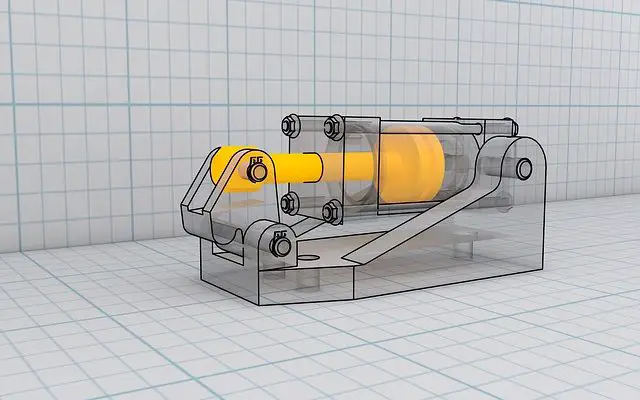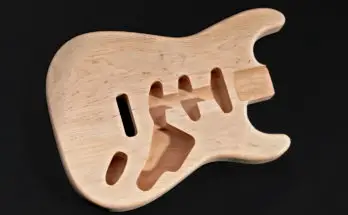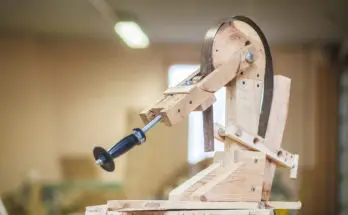As someone who has spent his fair time in a wood shop and a digital fabrication lab, I can say working with wood is one of the most satisfying uses of time there is. If you’re researching the best software for woodworking, I’m guessing you’re considering adding CNC milling to your skillset or switching the software you use to create 3D models. Or even better, you’re just getting started with this topic in school or as a hobby and want to start down the right path. Let’s take a look at how Google’s Sketchup compares to Autodesk’s Fusion 360.
Woodworking has existed in various forms since ancient, prehistoric times, while 3D modeling has existed for mere decades, so we should have a little sympathy that our software overlords have not created the perfect “magic bullet” for 3D modeling. As with every emerging technology, companies are competing for market share, and typically products find their niche based on their pros and cons.
What are the advantages of 3D modeling for woodworkers?
Some use the technology for testing ideas, visualizing products for clients, or figuring out how a certain detail will work before beginning work in a woodshop. Others use 3D modeling to generate G-code (more on that later) to send to a computer numerical control (CNC) mill or a 3D printer.
In the unlikely event you’re a woodworker that hasn’t seen a CNC mill in action, I can say that it is an engrossing process. Here’s a nice video introduction to the capabilities of CNC milling from Wood Magazine; there are countless more, and you can go down a wormhole of more specific videos on various milling topics.
If you would like to read my in depth article on using a CNC for woodworking, you can check it out here.
How easy are each of the programs to learn?
Both software are widely regarded as easy to learn, however in my empirical observation I have noticed that Sketchup tends to be easier to learn for those with no 3D modeling experience, while those with at least moderate AutoCAD skills should be able to pick up Fusion 360 more quickly.
The good news is that both have countless free educational videos online and you should even be able to find videos on obscure, highly specific topics that you wouldn’t believe exist. Take a look at some of the Sketchup training videos here and some  Fusion 360 videos here. If you click on Help in Sketchup, you will be linked to its very helpful Knowledge Center, while Fusion 360 has a native Learning Panel.
Fusion 360 videos here. If you click on Help in Sketchup, you will be linked to its very helpful Knowledge Center, while Fusion 360 has a native Learning Panel.
I personally believe you can get all the training you need by watching these free videos and simply experimenting, but there are other options. You can sign up for payed classes like Ledet, NY Institute of Art and Design, or Lynda. Classes like these typically come with other perks, like discounts on software, or 24/7 online support. Feel free to check in with your local college to see if there is a class you can sign up for. Sometimes the impetus of an assignment with a grade attached to it can kick your butt into high gear or introduce you to modeling techniques you hadn’t considered.
If you are interested in learning either of the programs, check out my article “What Are The Best Resources To Learn CAD for Woodworking?”. I list several budget friendly options!
Polygonal vs Curves-Based (NURBS) Modeling
Sketchup is a polygonal modeling software. Vertices connected by lines form edges, and edges connected to edges form surfaces. There are no true curves, which simplifies the build of the software and arguably simplifies the user interface.
If you’ve modeled anything with a curve in Sketchup, you’ve undoubtedly noticed the ramifications: you don’t have to zoom in very far to see that the curve is made up of several small line segments. There is an option to “smooth curves”, but that simply increases the number of line segments, which can get messy.
Fusion 360 is a curves-based modeling software, often referred to as “NURBS-based” (nonuniform rationale B-spline). Technically, Fusion 360 is not NURBS-based. Per 3dcadworld.com, “[3D Fusion] uses T-Splines, a mathematical form that provides the interactivity of Catmull-Clark subdivision (SubD) surfaces, with forward and backward compatibility to NURBS surfaces.” So yea, curves.
The tradeoffs between polygonal modeling and curves-based modeling are simplicity and realism. And yes, the realism route of curves-based modeling does require a beefier software that can take a lot of your CPU power.
Surface Modeling vs Solid Modeling
Sketchup is a surface modeler, meaning all objects are made up of infinitely thin surfaces called faces.
 Fusion 360 is a solid modeler, which is exactly as it sounds. If you model a sphere, it is solid. If you were to cut it and pull it apart, you would see two new surfaces created at the cut.
Fusion 360 is a solid modeler, which is exactly as it sounds. If you model a sphere, it is solid. If you were to cut it and pull it apart, you would see two new surfaces created at the cut.
Does this matter? Well, not really. However, since a model needs to be solid for a 3D printer, you’re less likely to run into exporting errors using a solid modeler. This should not be a determining factor in your decision, but it is worthwhile to understand the distinction.
Are they good for 3D printing?
The good news is that both software are commonly used for 3D printing. 3D printers have been having a boon time; I recall years ago that the Makerbot was becoming affordable enough that people were buying it for their own personal use at home, even those with limited modeling experience.
The most common file type for 3D printers is .STL. The free version of Sketchup does not come with a STL exporter, but you can download a free extension from the Extension Warehouse. Depending on the complexity of your model, you may run into some of the limitations of Sketchup such as a lack of chamfering edges and limited Boolean operations. This is not to say that there are no extensions to help with these tasks as well, but you have to go out of your way to find them.
Fusion 360, which has more built-in abilities than Sketchup, can export .STL out of the box, and has the benefit of being able to print directly to a 3D printer rather than going through another software (You have to do that with Sketchup.)
Regardless of the software, there are certain criteria you will have to meet to have a working .STL file that can be printed: The model must be solid, it must be watertight (manifold), and of course it must be scaled to fit in the boundaries of the printer. Check out a list of requirements/tips on i.materialise.com.
Can either program generate G-code?
What is G-code anyway? If you’re reading this article, you likely have a basic understanding of G-code, but let’s break it down to get everyone on the same page. G-code is the dominant language for CNC milling.
Fun fact: most 3D printers don’t read STL directly; rather, the STL file is converted to G-code. Those who have operated CNC mills themselves have seen the endless lines of code that are sent to the mill. G-code is simply a file that contains rows of letters and numbers that tell the CNC where to move to on your table and how fast it should move to get there.
Unsurprising, basic Sketchup requires you to download plugins to generate G-code. Follow along here for step by step instructions on converting a model to G-code. Again, this is not difficult to do, but you do have some extra effort.
Fusion 360 does have the native ability to generate G-code, but you have to create toolpaths in the CAM workspace. Sound intimidating? No worries, another step by step guide exists!
Usually, a fabrication shop has an employee that will check the G-code for a few critical items, like ensuring the correct bit is being picked up, or the angle of approach is appropriate for the material and the cut. If you want to have a deeper understanding of G-code, nerd out on the Autodesk site.
How much do they cost?
You’ll have to check the respective websites for latest pricing, but at the time of this writing, you can likely work in these software’s for free. I have both Sketchup Pro and Fusion 360 on my computer.
 Sketchup Pro is on a 30 day trial, after which I will have to pay up or settle with the slimmed-down Sketchup Make or the new cloud-based Sketchup Free. For the record, I’ve been able to model almost anything I needed with Sketchup Make, especially with the many available free plug-ins. You can find plug-ins catered specially for woodworkers, such as CutList which helps determine how much material you’ll need for your project.
Sketchup Pro is on a 30 day trial, after which I will have to pay up or settle with the slimmed-down Sketchup Make or the new cloud-based Sketchup Free. For the record, I’ve been able to model almost anything I needed with Sketchup Make, especially with the many available free plug-ins. You can find plug-ins catered specially for woodworkers, such as CutList which helps determine how much material you’ll need for your project.
Fusion 360 is even more generous – the ad-free ultimate tier is free under certain conditions. Per Autodesk:
Fusion 360 will always be free for hobbyists, makers, startups working on developing their products, and students/faculty. Hobbyists get 1 year free to start, whereas students and faculty get 3 years. After the subscription expires, you’ll have the option to renew and start the free subscription all over again. You do this until either you want to switch to a paid license or stop using the software. Also, you don’t just get the standard tier of Fusion 360, you get the Ultimate tier. Free.
Additionally, small business under $100,000 can also use the software for free! If you do not meet the free criteria, you can see pricing options here.
Have fun!
The cop out answer of which software to choose is to say, “Well, it depends on the individual and the project, and one must weigh the pros and cons of each” (I mean, this is true, but… boring), so I’ll give you my opinion on the topic:
If you are new to modeling OR the modeling you do for woodworking is strictly to experiment, visualize, and figure out details, Sketchup is probably your best bet.
If you have experience with drafting/modeling software, especially AutoDesk products like AutoCAD, OR you frequently have your models cut on a CNC mill, Fusion 360 is the way to go.
Of course, many, many other people have strong feelings about this topic as well. If you’ve reached a conclusion on the topic, join in the conversation by commenting below.
Finally, good luck with your woodworking endeavors!




